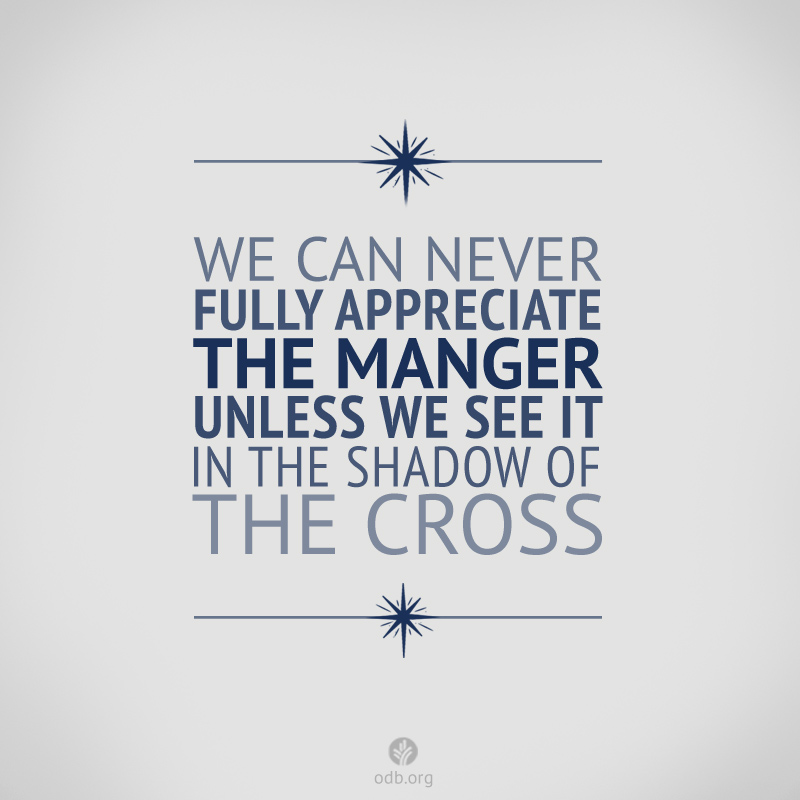Diamond Dust
During a bitterly frigid winter in our part of Michigan, there were many mixed emotions about the weather. As the snowy winter season pressed on into March, most people had long before fallen out of love with snow and were bemoaning long-range forecasts of low temperatures.
Yet the majestic beauty of the snow continued to amaze me. Even as I threw endless shovelsful of it from my driveway onto the over-my-head snowbanks, I was enthralled with the white stuff. One particular day, ice crystals filtered down from the sky to fall atop old snow. As my wife and I took a walk through this sparkling scene, it looked as if diamond dust had been sprinkled across the landscape.
In Scripture, snow seems to have varied purposes. God sends it as an indicator of His creative greatness (Job 37:6; 38:22-23). Snow-capped mountains irrigate the arid valleys below. But more significantly, God gives snow as a picture of our forgiveness. The gospel of Jesus provides a way for us to be cleansed of our sins and for our hearts to be made much “whiter than snow” (Ps. 51:7; Isa. 1:18).
The next time you see snow—in life or in photos—thank God for the forgiveness and the freedom from sin’s penalties that this beautiful, natural gift pictures for all who have put their trust in our Savior.

Christmas Sacrifice
O Henry’s classic tale “The Gift of the Magi” tells of Jim and Della, a young married couple who are struggling financially. As Christmas approaches they want to give special gifts to each other, but their lack of money drives them to drastic measures. Jim’s prized possession is a gold watch, while Della’s is her long, beautiful hair. So Jim sells his watch in order to buy combs for Della’s hair, while Della sells her hair to buy a chain for Jim’s watch.
The story has deservedly become beloved, for it reminds us that sacrifice is at the heart of true love, and sacrifice is love’s truest measure. This idea is particularly appropriate for Christmas, because sacrifice is the heartbeat of the story of the birth of Christ. Jesus Christ was born to die, and He was born to die for us. That is why the angel told Joseph, “You are to give him the name Jesus, because he will save his people from their sins” (Matt. 1:21).
Long before Christ’s birth, it had been determined that He would come to rescue us from our fallenness—which means that we can never fully appreciate the manger unless we see it in the shadow of the cross. Christmas is completely about Christ’s love, seen most clearly in His sacrifice for us.

A Fragile Gift
When we give a fragile gift, we make sure it is marked on the box that contains it. The word fragile is written with big letters because we don’t want anyone to damage what is inside.
God’s gift to us came in the most fragile package: a baby. Sometimes we imagine Christmas day as a beautiful scene on a postcard, but any mother can tell you it wasn’t so. Mary was tired, probably insecure. It was her first child, and He was born in the most unsanitary conditions. She “wrapped Him in swaddling cloths, and laid Him in a manger, because there was no room for them in the inn” (Luke 2:7 nkjv).
A baby needs constant care. Babies cry, eat, sleep, and depend on their caregivers. They cannot make decisions. In Mary’s day, infant mortality was high, and mothers often died in childbirth.
Why did God choose such a fragile way to send His Son to earth? Because Jesus had to be like us in order to save us. God’s greatest gift came in the fragile body of a baby, but God took the risk because He loves us. Let us be thankful today for such a gift!

Christmas Mystery
As Charles Dickens’ story A Christmas Carol begins, there is mystery surrounding Ebenezer Scrooge. Why is he so mean-spirited? How did he become so selfish? Then, slowly, as the Christmas spirits marched Scrooge through his own story, things become clearer. We see the influences that changed him from a happy youth into a selfish miser. We observe his isolation and his brokenness. As the mystery is solved, we also glimpse the path to restoration. Concern for others pulls Scrooge from his self-absorbed darkness into a new joy.
A far more important mystery, and one much harder to explain, is that which Paul spoke of in 1 Timothy 3:16: “Beyond all question, the mystery from which true godliness springs is great: He appeared in the flesh, was vindicated by the Spirit, was seen by angels, was preached among the nations, was believed on in the world, was taken up in glory.” Extraordinary! God “appeared in the flesh.”
The mystery of Christmas is how God could become man while remaining fully God. It defies human explanation, but in the perfect wisdom of God, it was the plan of the ages.
“What child is this?” He is Jesus Christ—God revealed in the flesh.


